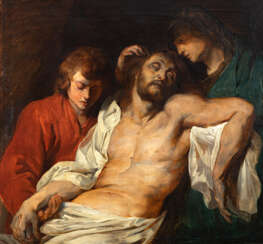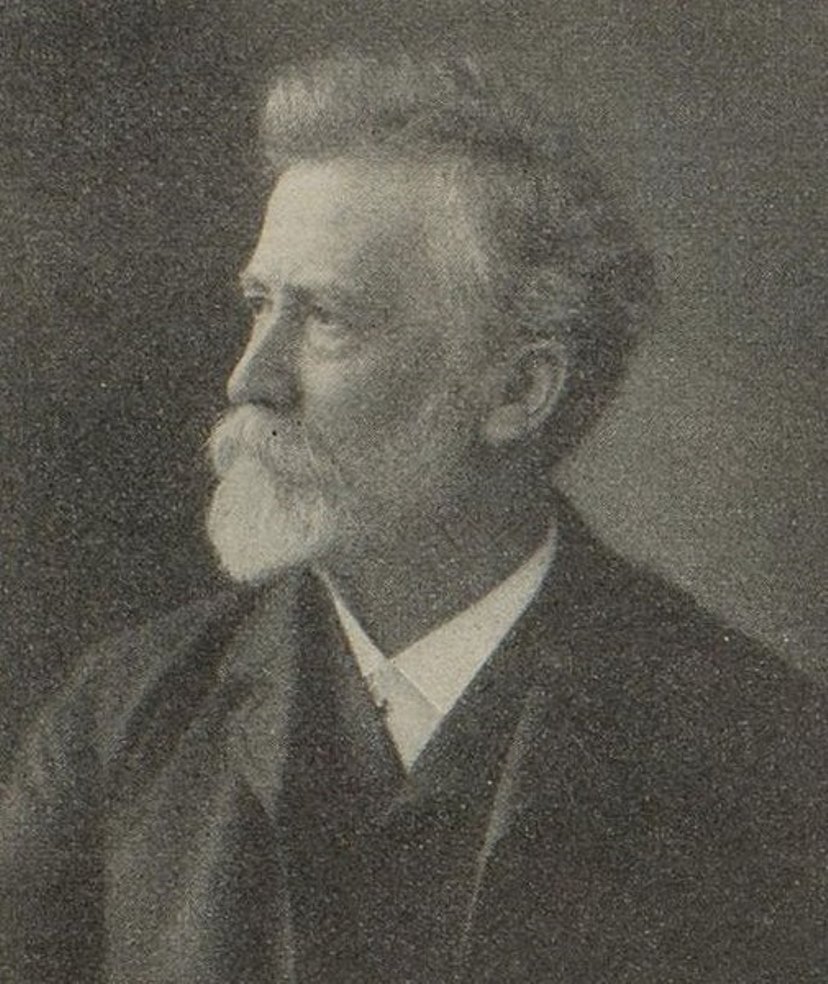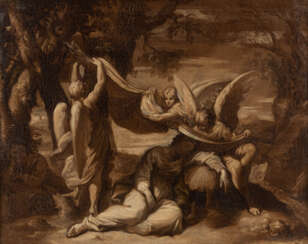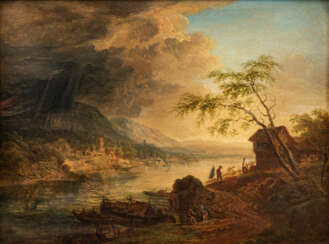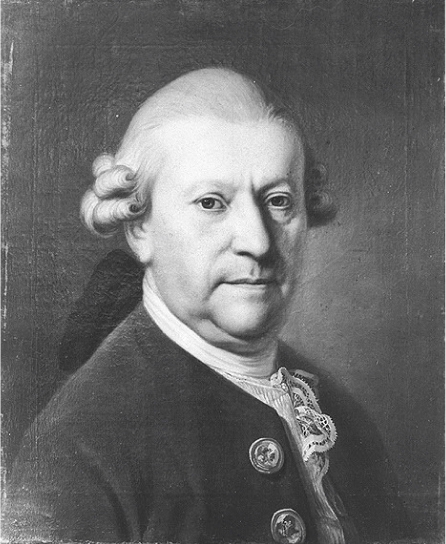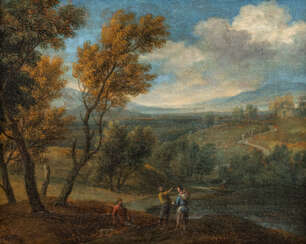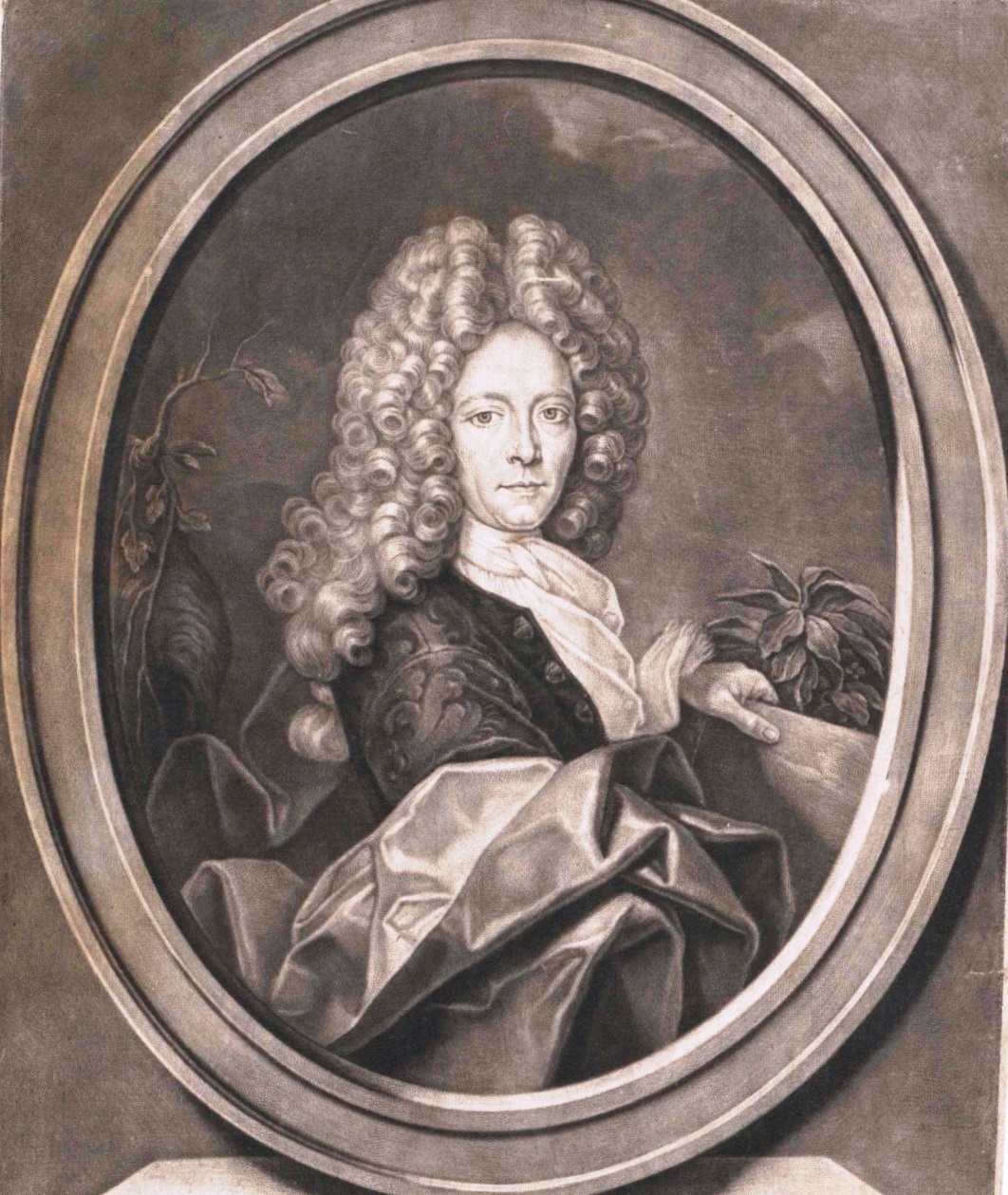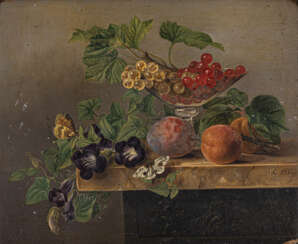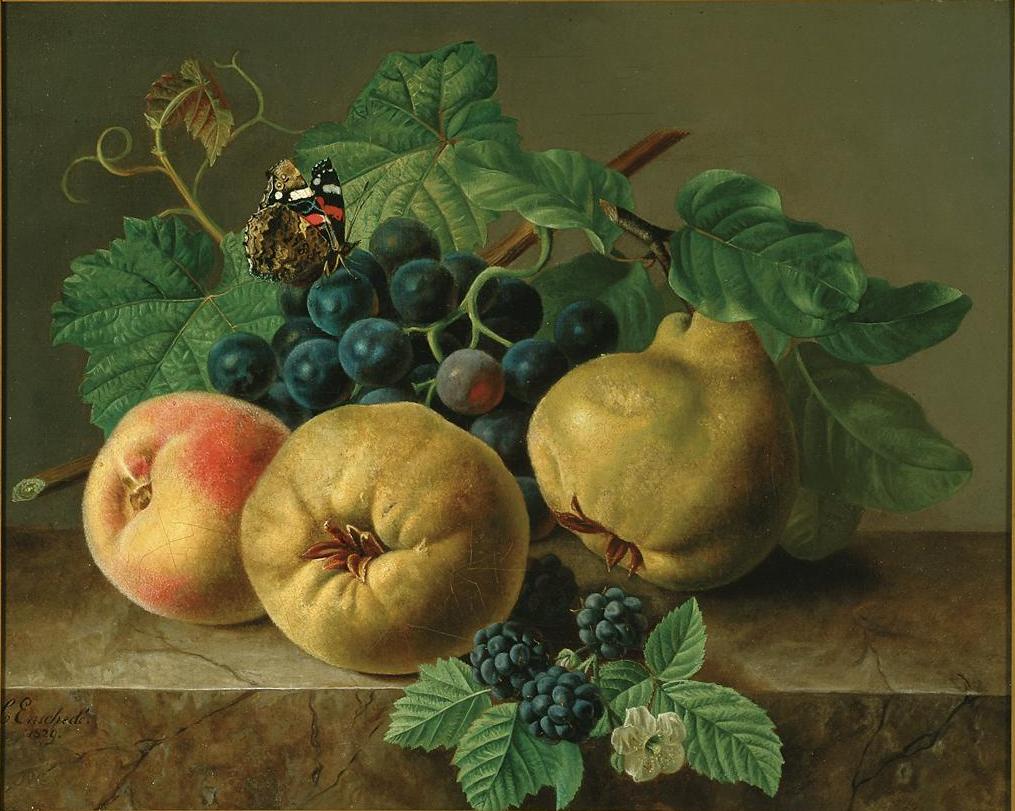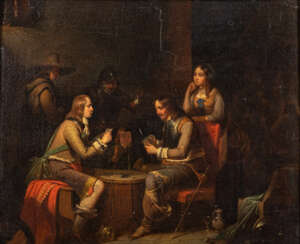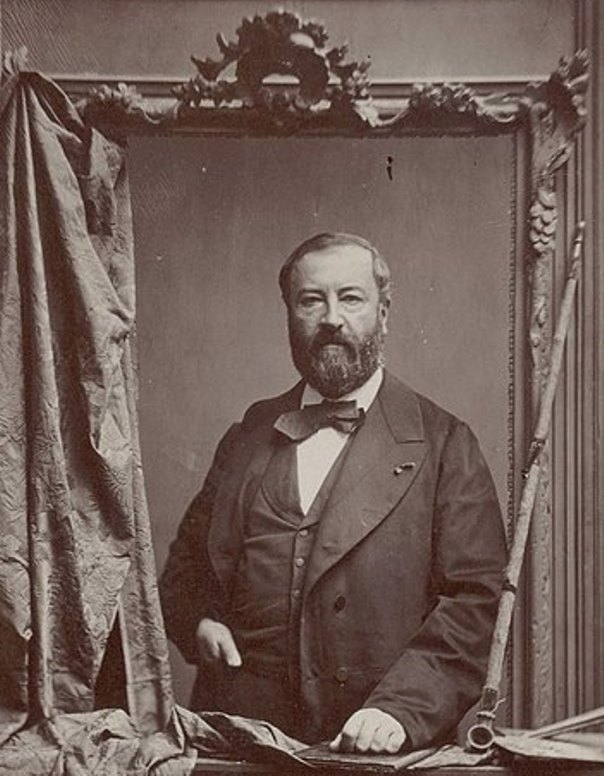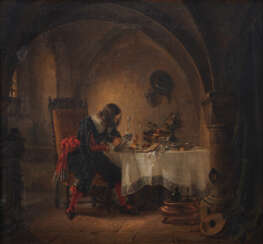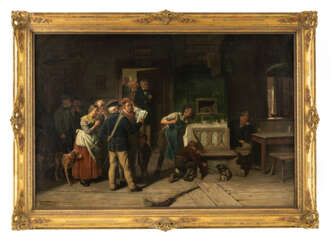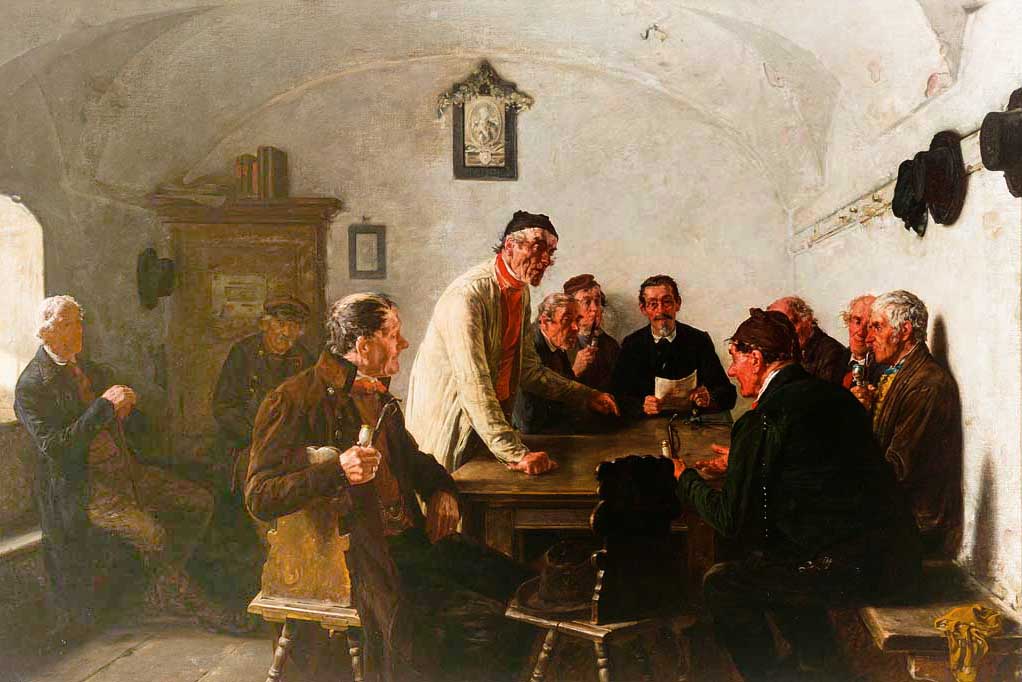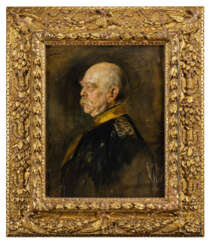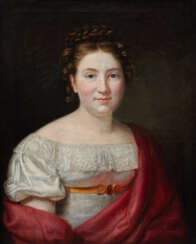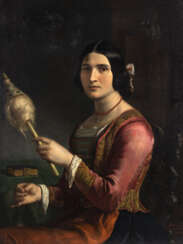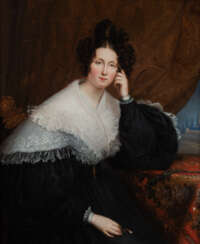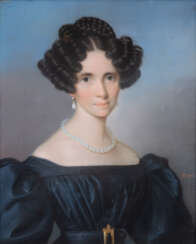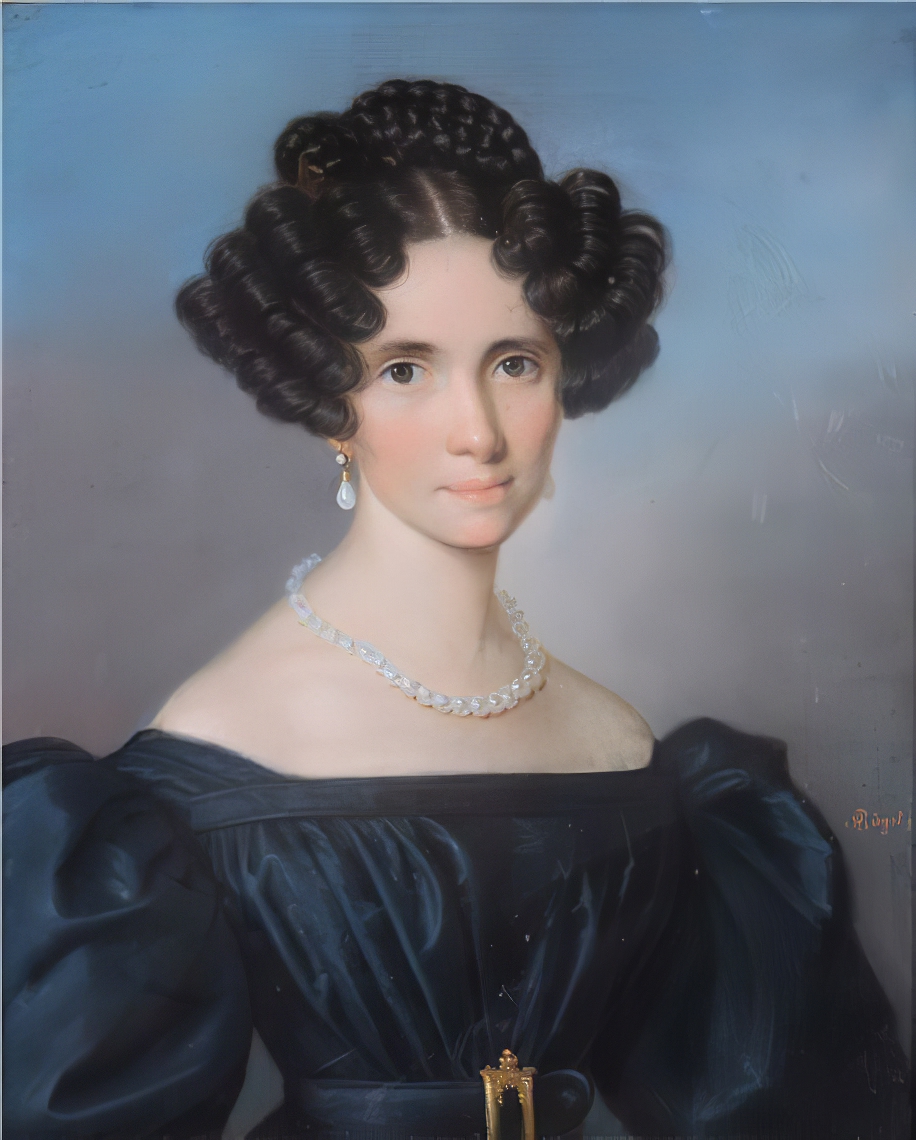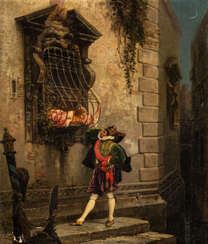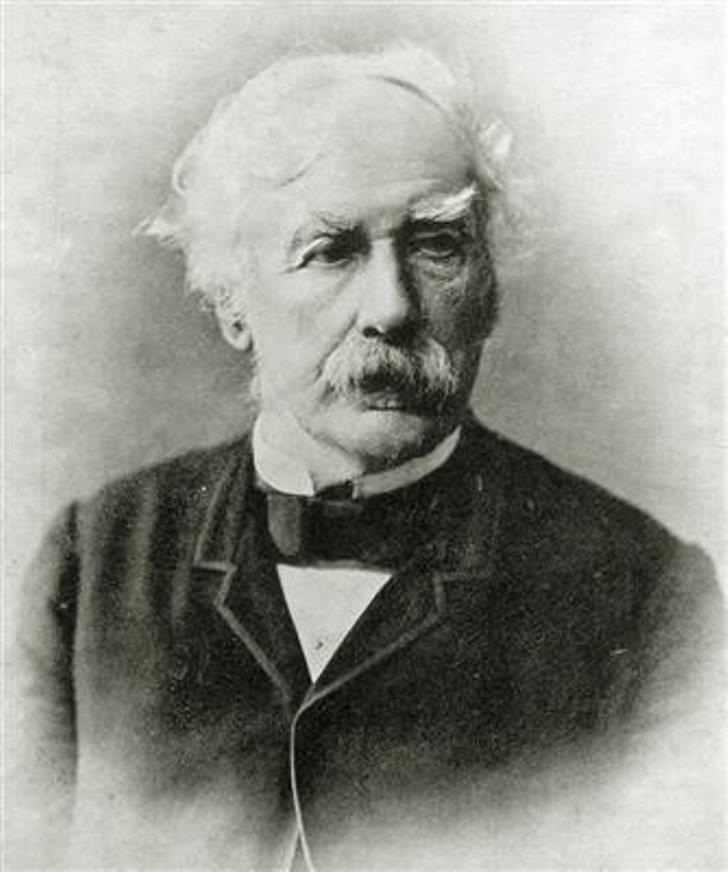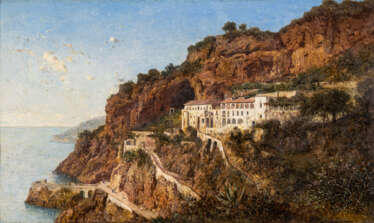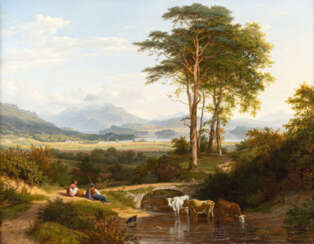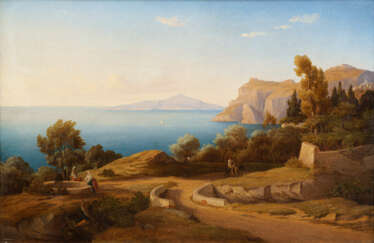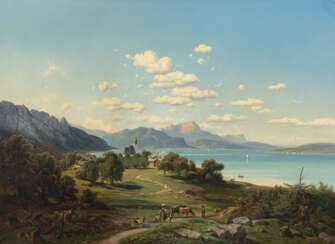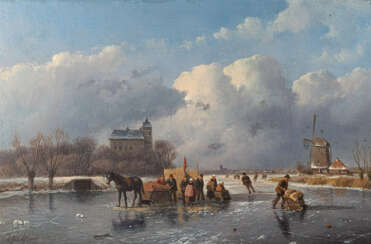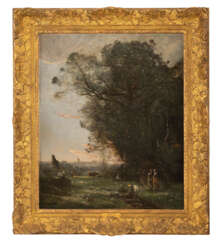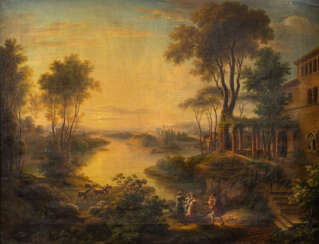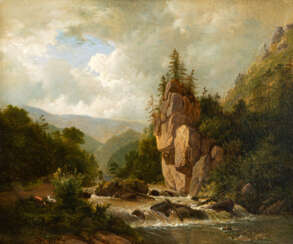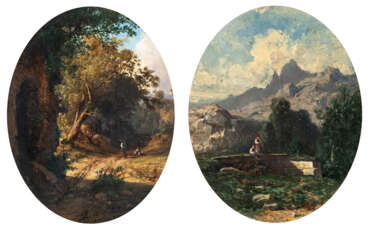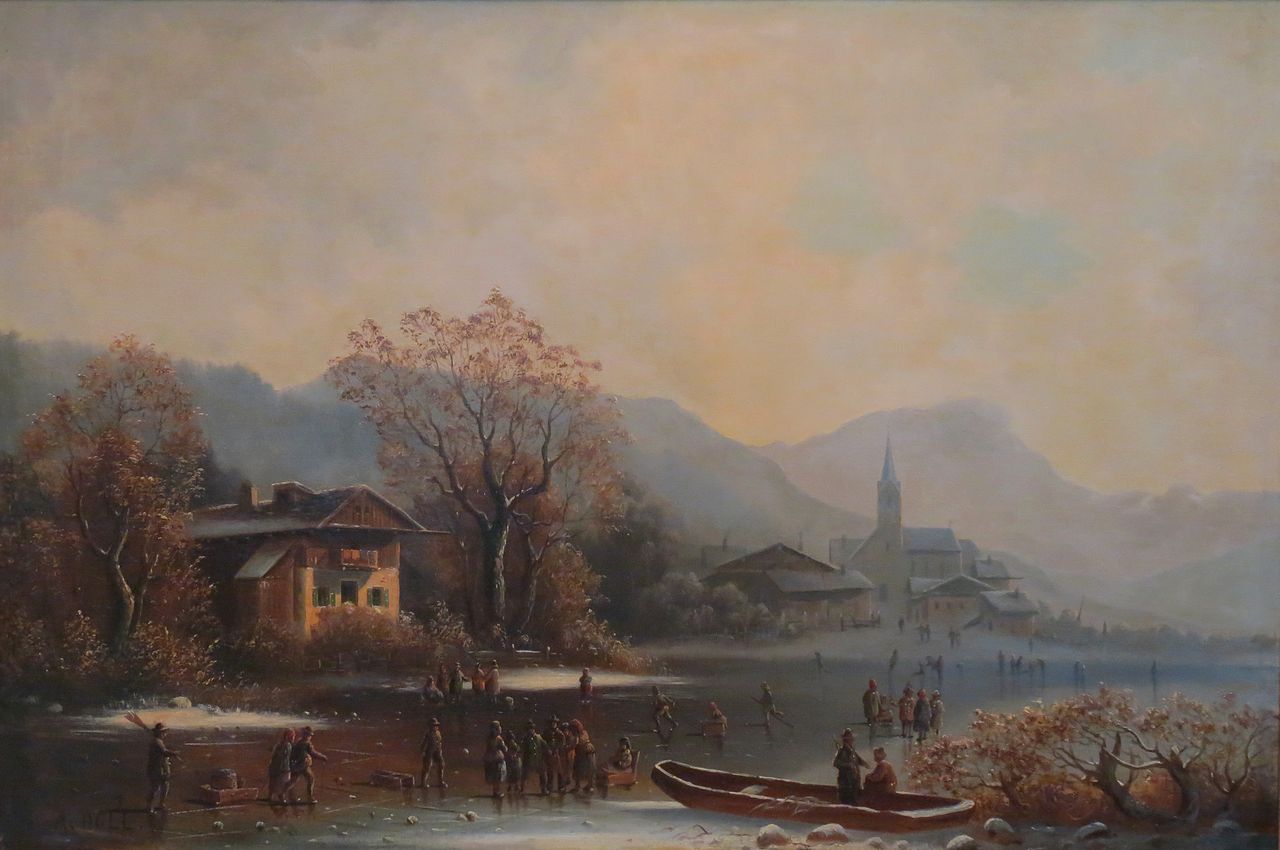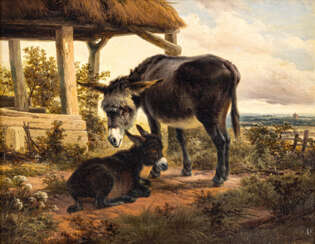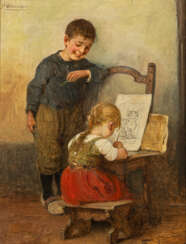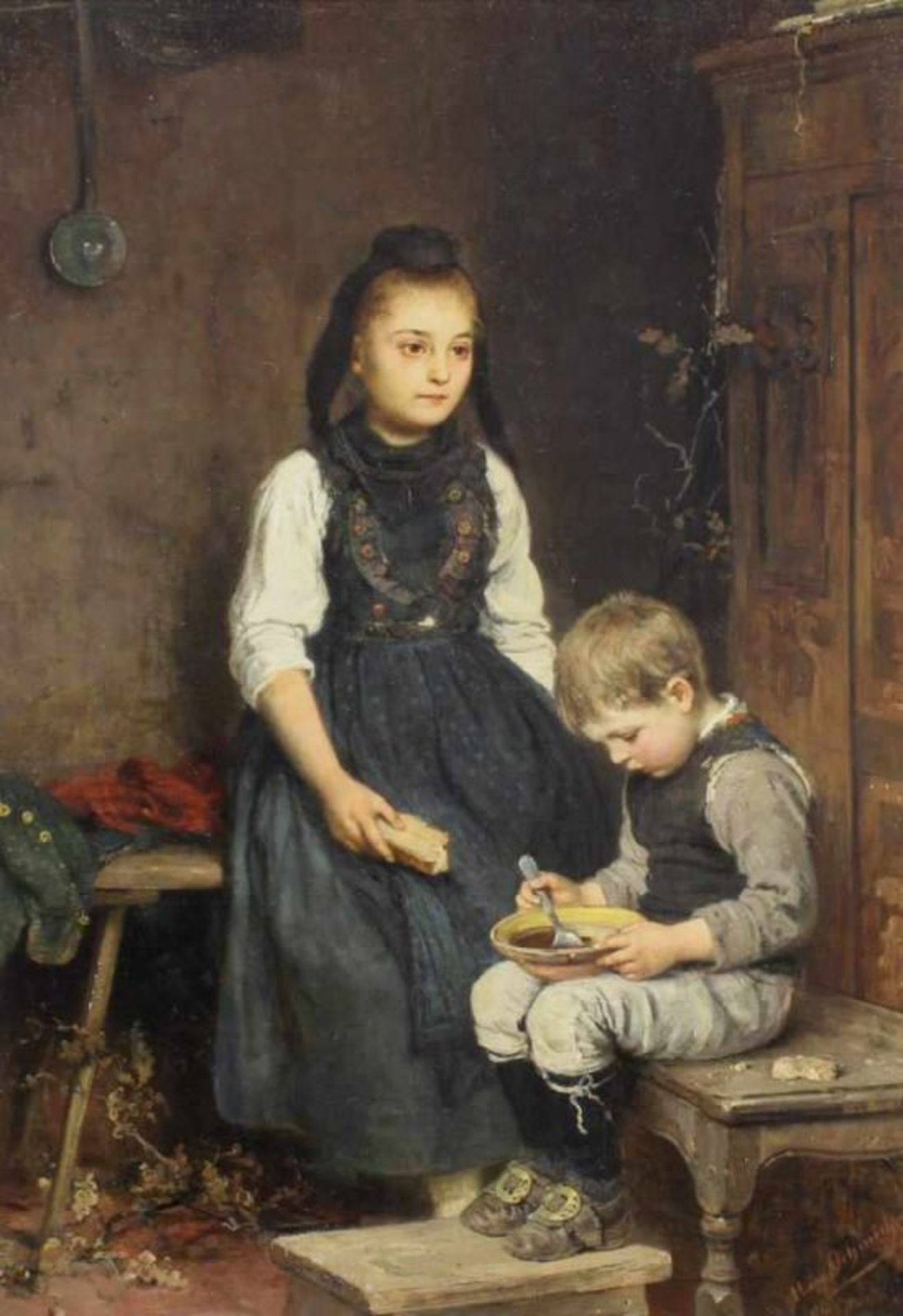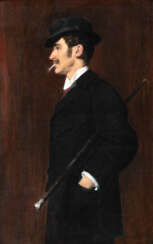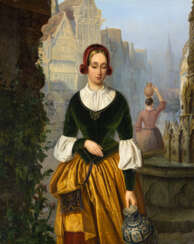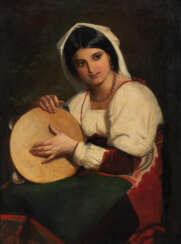
Paintings — 797 | Old art, antiques & jewelry
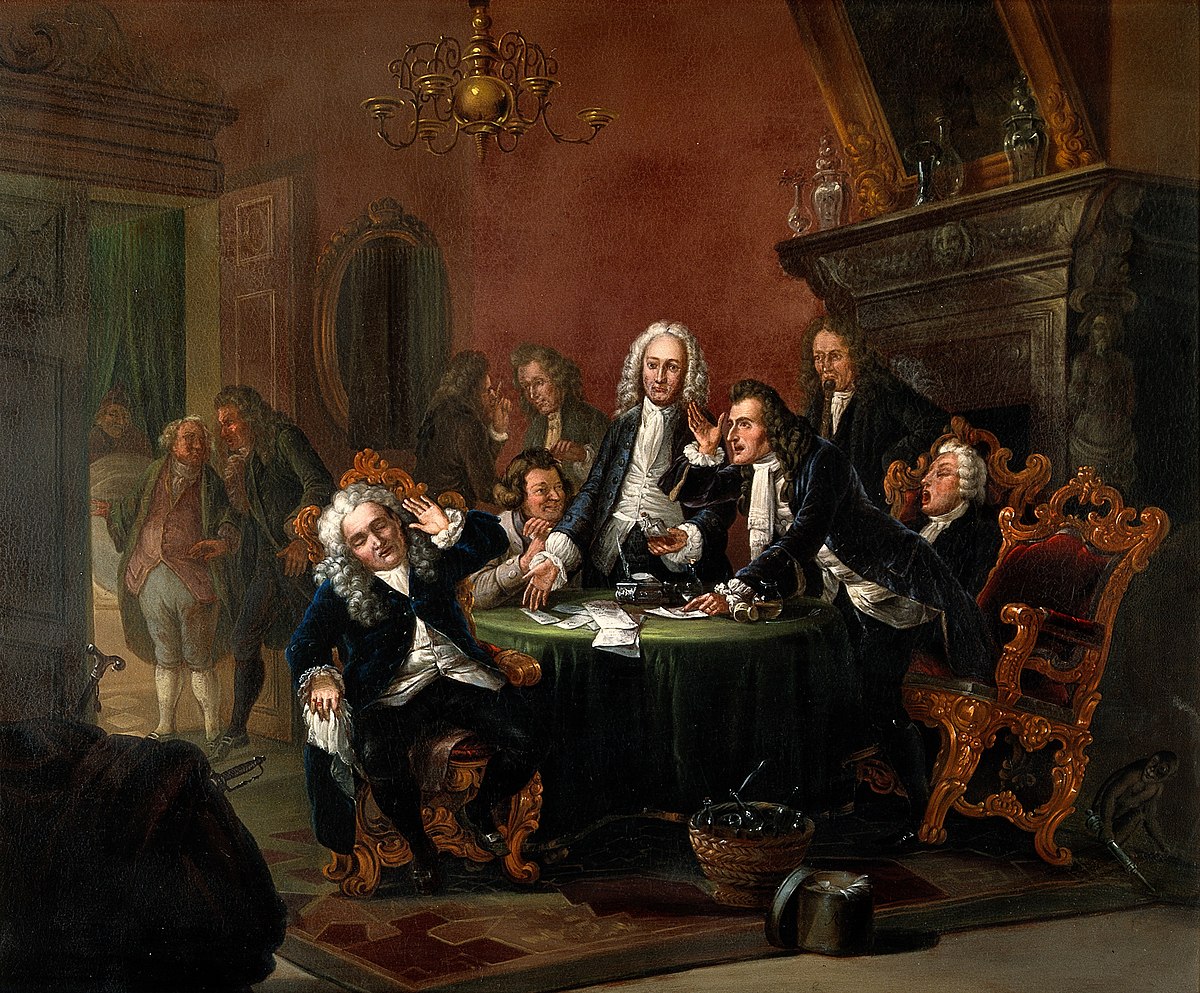
Johann Geyer was a German painter of the mid-nineteenth century. He is a renowned master of genre and history painting and is considered one of the foremost German genre painters of his time.
Geyer painted genre paintings, which were particularly popular in the 1830s and 1840s. Many of them became widely known through lithographs. About 180 of his paintings are now in museums in Germany, especially in Augsburg, his hometown. The master also taught at the Polytechnic School of Augsburg and won a prize at the Munich Industrial Exhibition in 1836.
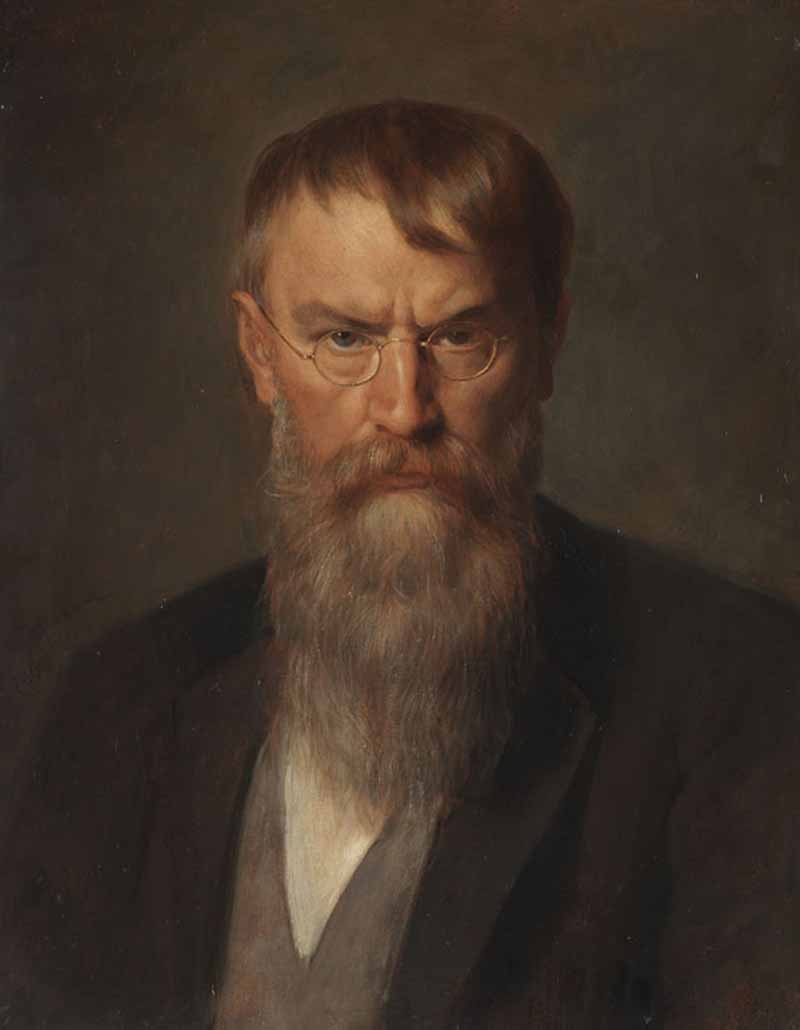
Franz Seraph Lenbach was a German painter known primarily for his portraits of prominent personalities from the nobility, the arts, and industry. Because of his standing in society, he was often referred to as the "Malerfürst" (Painter Prince).
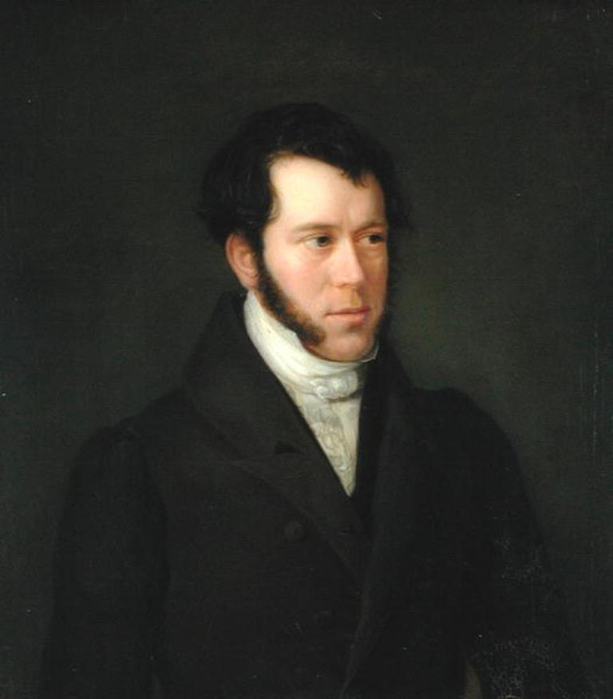
Günther Gensler was a German artist of the mid-nineteenth century. He is known as a painter, draughtsman, graphic artist and printmaker, a representative of the Hamburg art school.
Gensler created more than 120 oil paintings and graphic works during his career. The most famous of them is the painting "Meeting of Members of the Hamburg Artists' Club" in 1840. The master began preparatory work on this group portrait in 1838.
In 2019, Gensler's works were part of the exhibition "The Hamburg School - Rediscovering the 19th Century" at the Hamburger Kunsthalle.
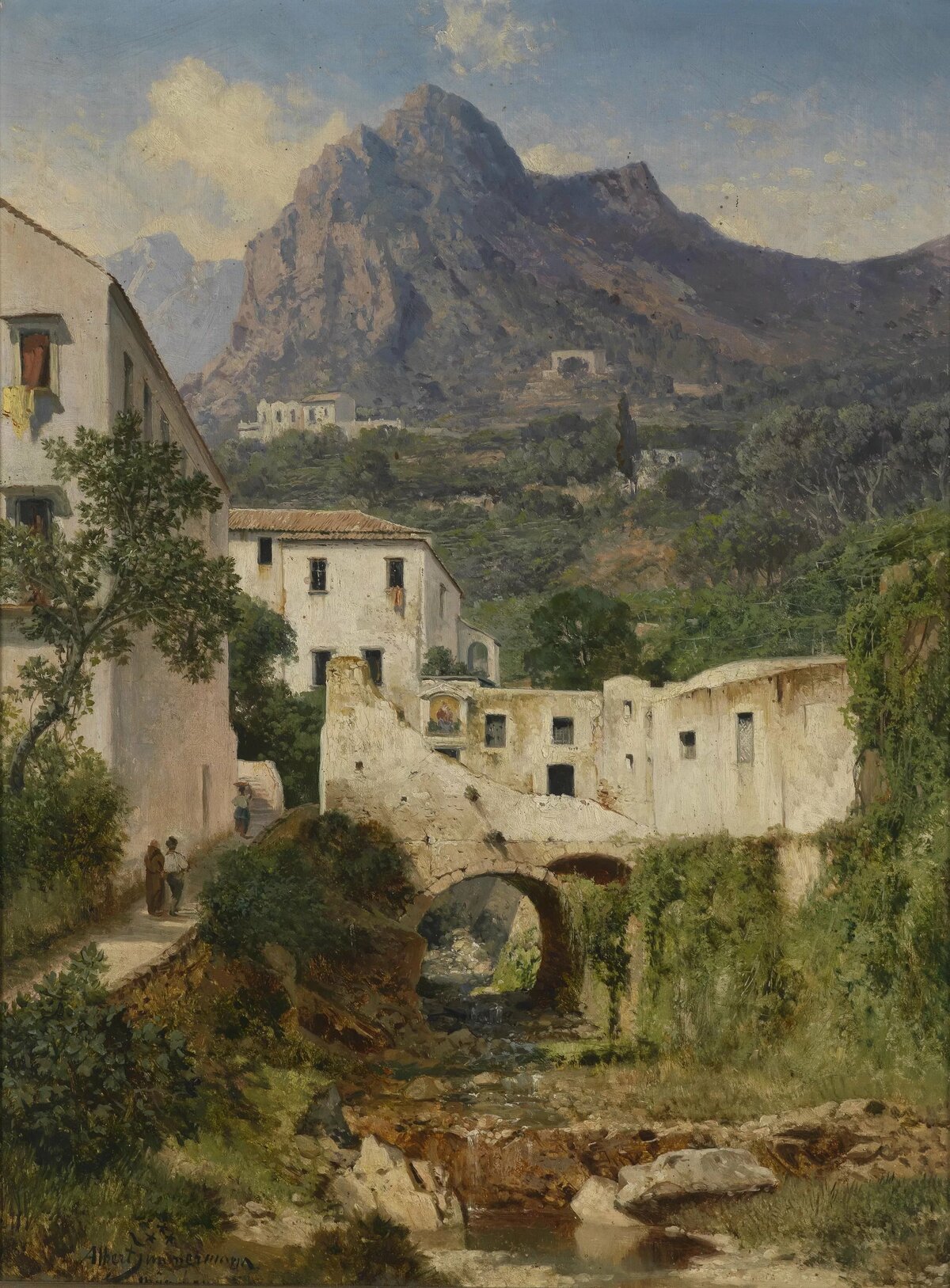
August Albert Zimmermann was a German artist. The eldest of the artist brothers Max, Robert and Richard Zimmermann.
Albert Zimmermann studied painting at the Dresden University School of Fine Arts and, from 1831, at the Munich Academy. In Munich the artist created a school of landscape painting that was popular with the locals. Since 1857 August Albert Zimmermann is professor of painting at the Accademia di Belle Arti di Brera in Milan.
Zimmermann was a major representative of heroic-historical landscape painting. He chose subjects for his canvases as a rule among mountainous terrain, often using events from biblical history. Later he created poetic pictures of idyllic nature.
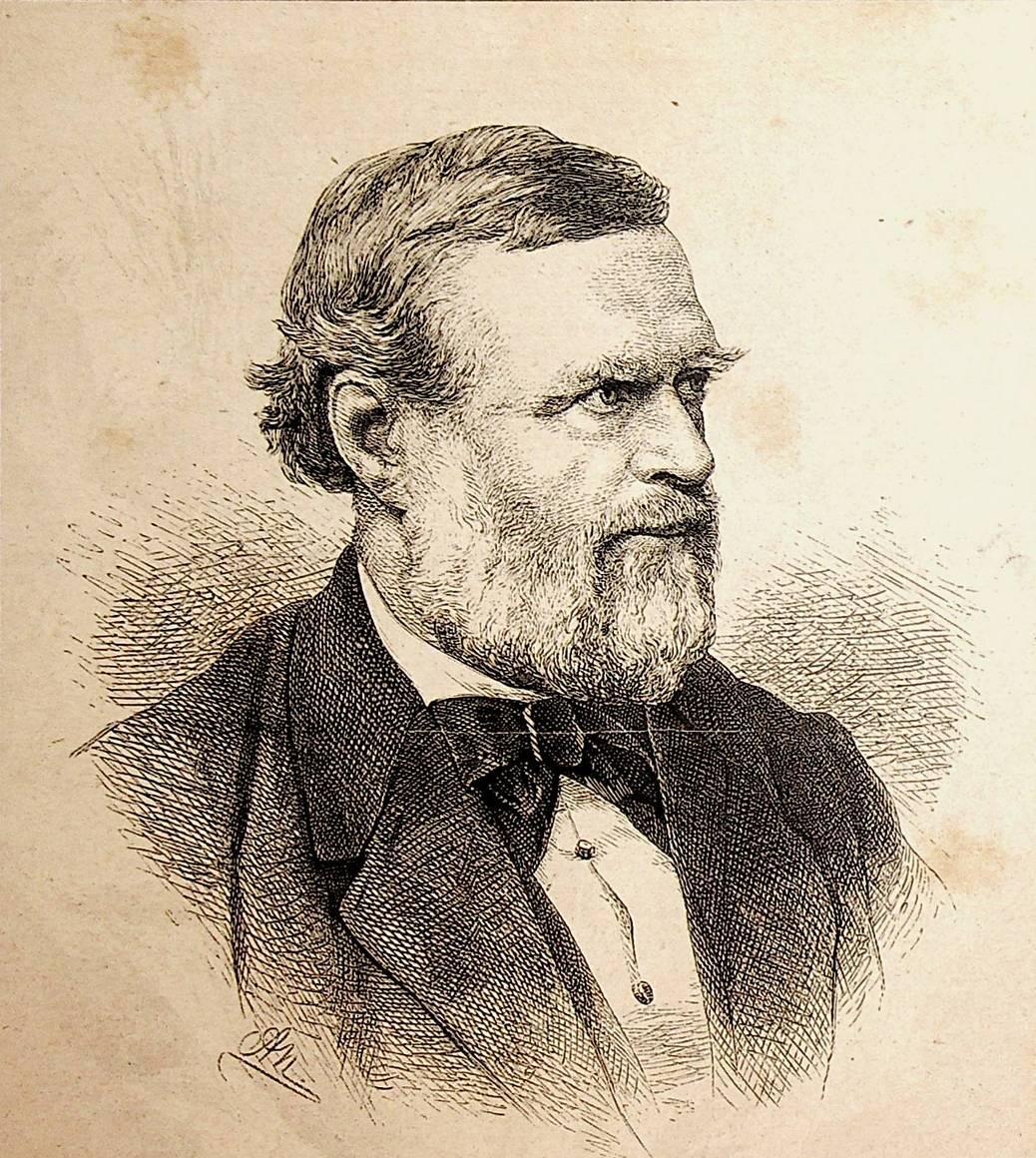
Carl Friedrich Heinrich Werner was a German watercolorist.
Carl Werner studied painting and architecture in Germany, then moved to Italy, where he painted watercolors for nearly twenty years and exhibited in London and other European cities. From 1862 to 1864 he traveled to Palestine and Egypt. He produced impressive paintings of the architectural monuments of that world. Among his works, the voluminous work "Jerusalem, Bethlehem and the Holy Places" with views of the Holy Land, containing 32 plates, is particularly notable. It is one of the rarest books with color plates on the Middle East.
Werner was one of the few non-Muslims given access to paint the interior of the Dome of the Rock, and there are also views of Bethlehem, Bethany, and the Dead Sea, while Jerusalem includes street scenes, the Greek and Armenian chapels, the Church of the Holy Sepulchre, the Street of David, and the Wailing Wall.
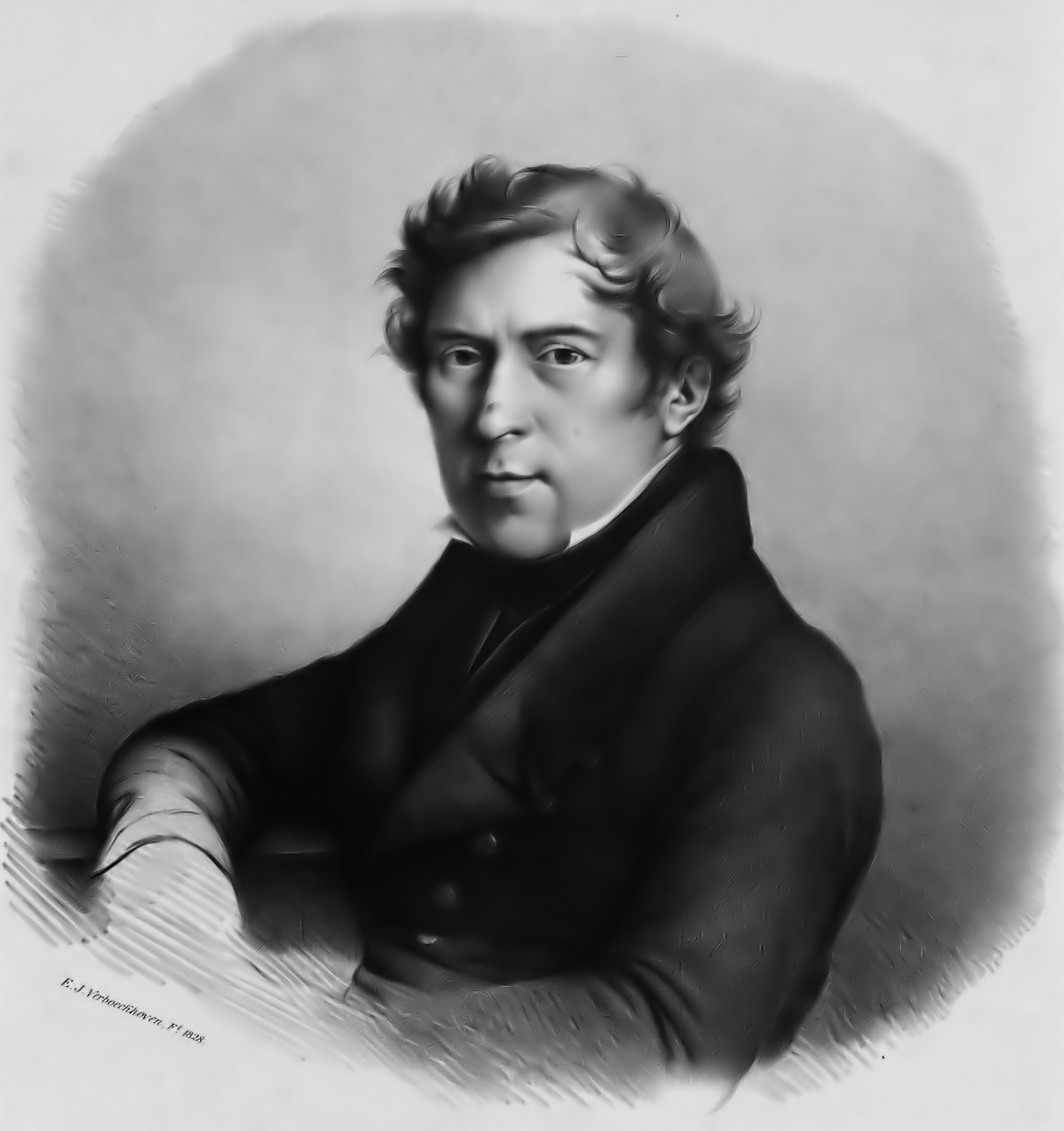
Andreas Schelfhout was a distinguished Dutch painter, etcher, and lithographer, celebrated for his exquisite landscape paintings. Born and based in The Hague, Schelfhout initially trained as a gilder and framemaker before apprenticing to a decorative painter between 1811 and 1814. This period marked the beginning of his journey into landscape painting, with his works being exhibited from 1815 onwards. Andreas Schelfhout's artistry is deeply rooted in the Romantic movement, with his Dutch winter scenes and frozen canals featuring skaters becoming particularly renowned during his lifetime. These works, showcasing a meticulous attention to detail and atmospheric quality, cemented his status as one of the most influential landscape artists of the 19th century.
A notable aspect of Andreas Schelfhout's career was his impact on other artists. He provided training to many painters who would later gain fame in their own right, such as Johan Jongkind, a forerunner of the Impressionists, and Charles Leickert. His advocacy for the use of watercolour in en plein air sketching significantly influenced his students and contemporaries, particularly enhancing the techniques of Jongkind, Jan Hendrik Weissenbruch, and Willem Roelofs.
Andreas Schelfhout's legacy is not only reflected in his influential teaching but also in the breadth of his creations. His works include not just winter scenes but also seascapes and landscapes depicting various aspects of Dutch scenery. His paintings often evoke a nostalgic longing for the past, a characteristic trait of the Romantic style, with elements like the ruins of castles or chapels adding a historical dimension to the landscapes.
Several of Andreas Schelfhout's masterpieces are displayed in prominent museums and galleries, evidencing his significant contribution to the art world. His works can be found in the Rijksmuseum in Amsterdam, the Museum Boymans-van Beuningen in Rotterdam, the Dordrechts Museum in Dordrecht, the Teylers Museum in Haarlem, and the National Gallery in London, among others.
Andreas Schelfhout was not just an artist; he was a pivotal figure in the Dutch Romantic landscape painting scene. His influence extended beyond his own works to shape the styles and techniques of future generations of artists. For collectors and experts in art and antiques, Schelfhout's works represent a significant era in art history, embodying the essence of Romanticism in Dutch landscape painting.
For those interested in staying informed about new product sales and auction events related to Andreas Schelfhout, signing up for updates is highly recommended. This subscription ensures that enthusiasts and collectors are always in the know regarding the latest developments and opportunities related to Schelfhout's artistry.
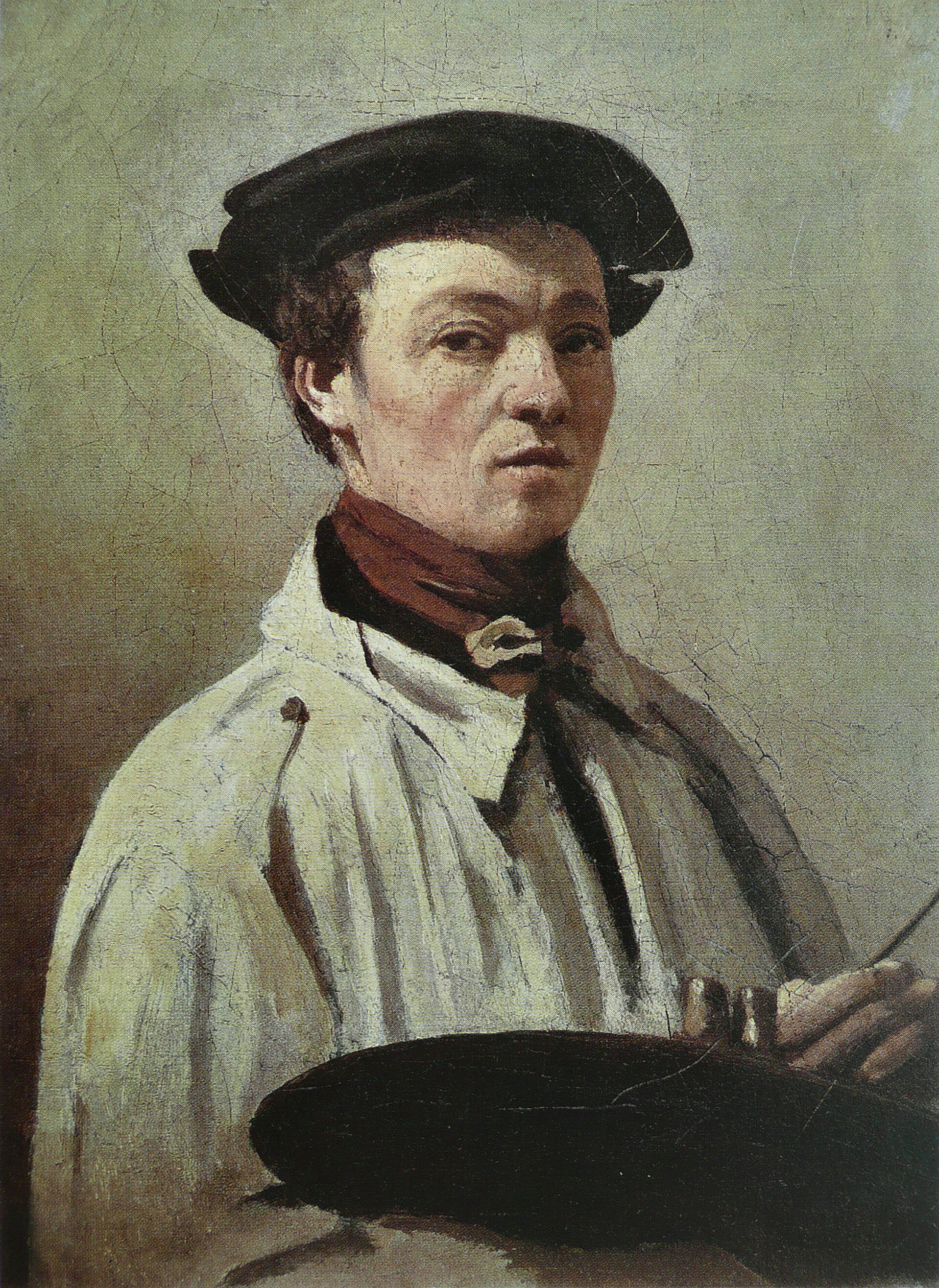
Jean-Baptiste-Camille Corot was a French landscape and portrait painter as well as a printmaker in etching. He is a pivotal figure in landscape painting and his vast output simultaneously referenced the Neo-Classical tradition and anticipated the plein-air innovations of Impressionism.
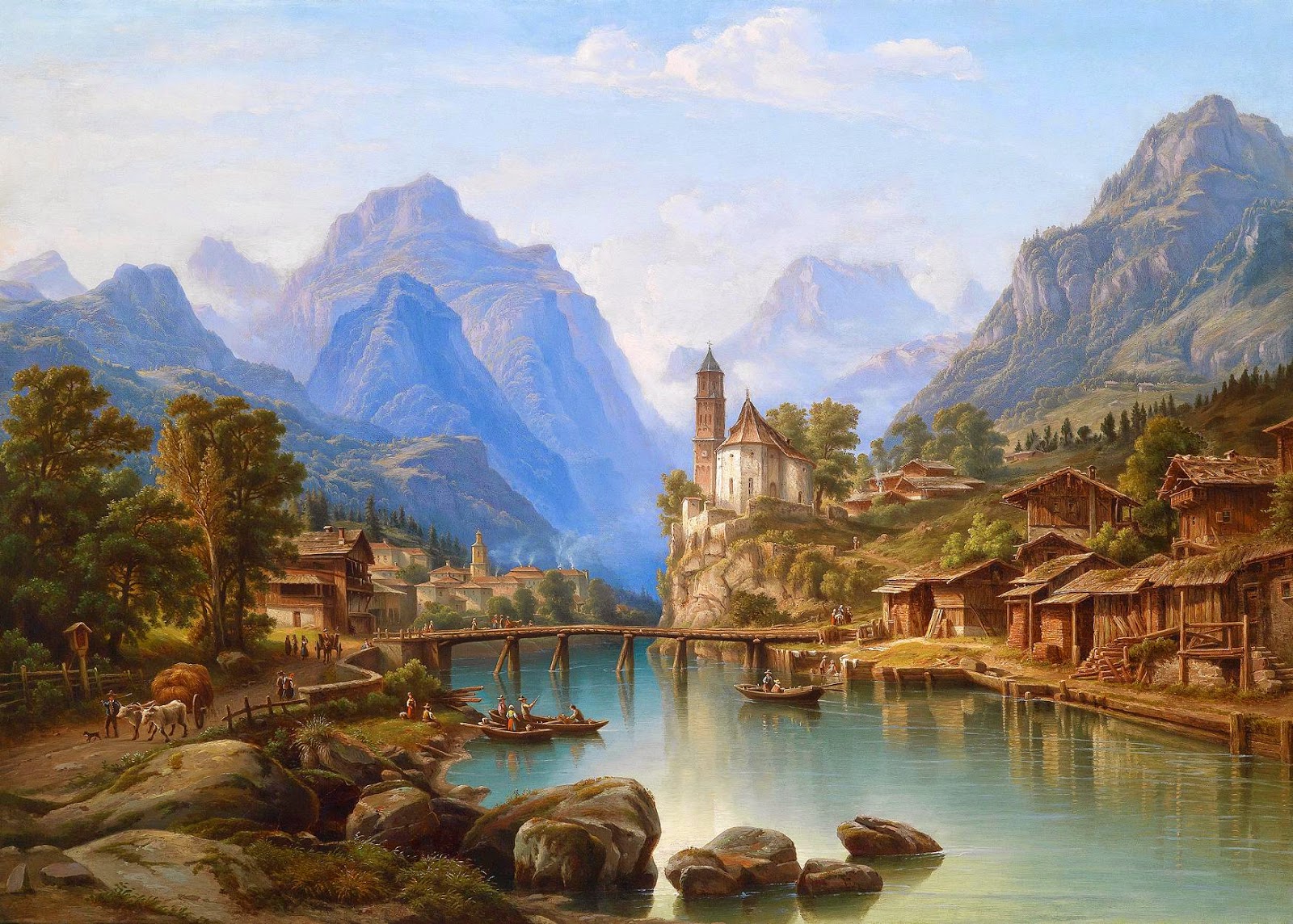
Heinrich Karl Jaeckel (Jäckel) was a German landscape painter who painted views of northern Italy and Switzerland. He exhibited regularly at the Berlin Academy, as well as in Lübeck, Dresden and Vienna.
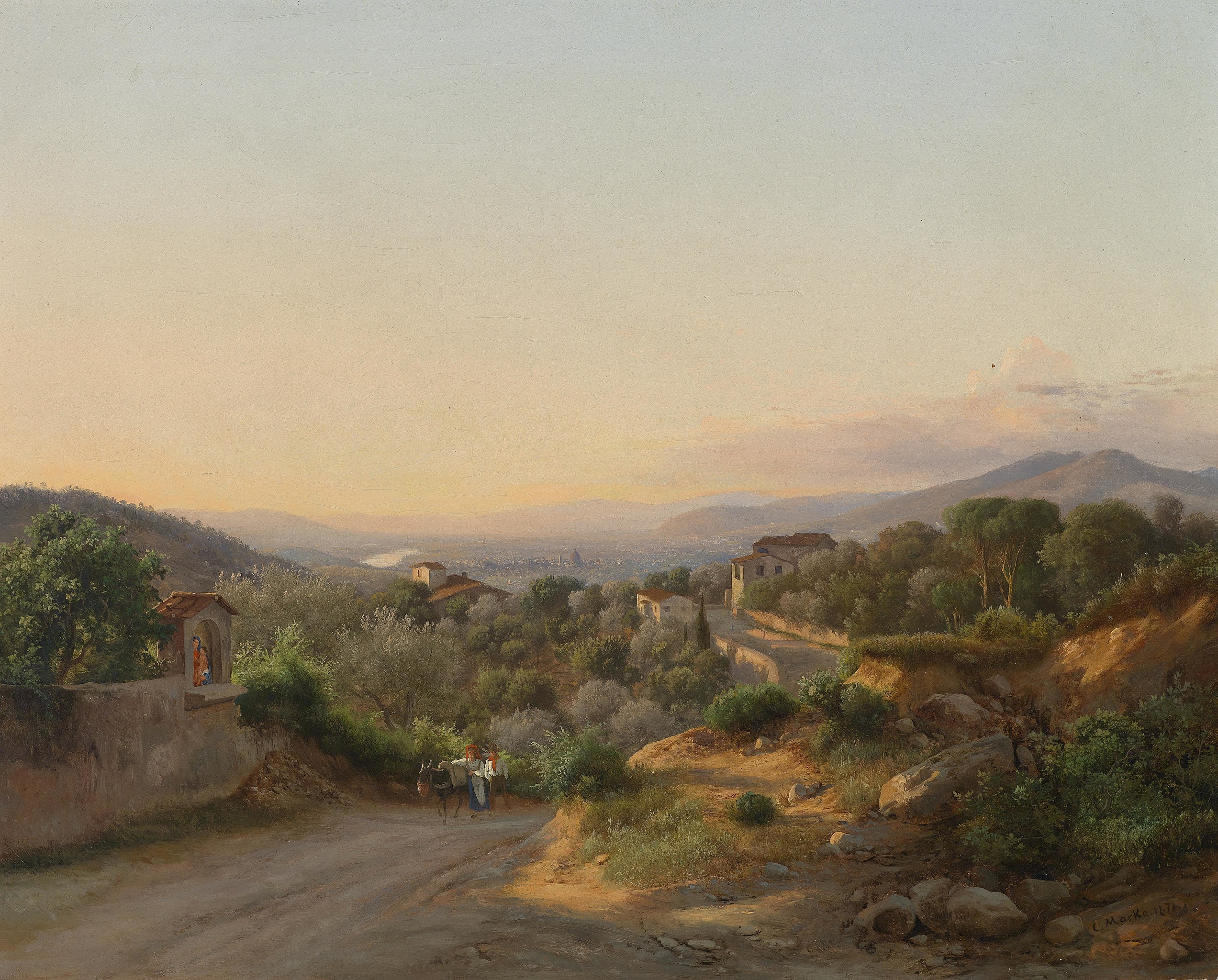
Károly Markó the Younger was a Hungarian-Italian landscape painter.
Károly Markó Jr. was a professor at the Academy of Fine Arts in Florence, as well as in Genoa, Perugia and Urbino.
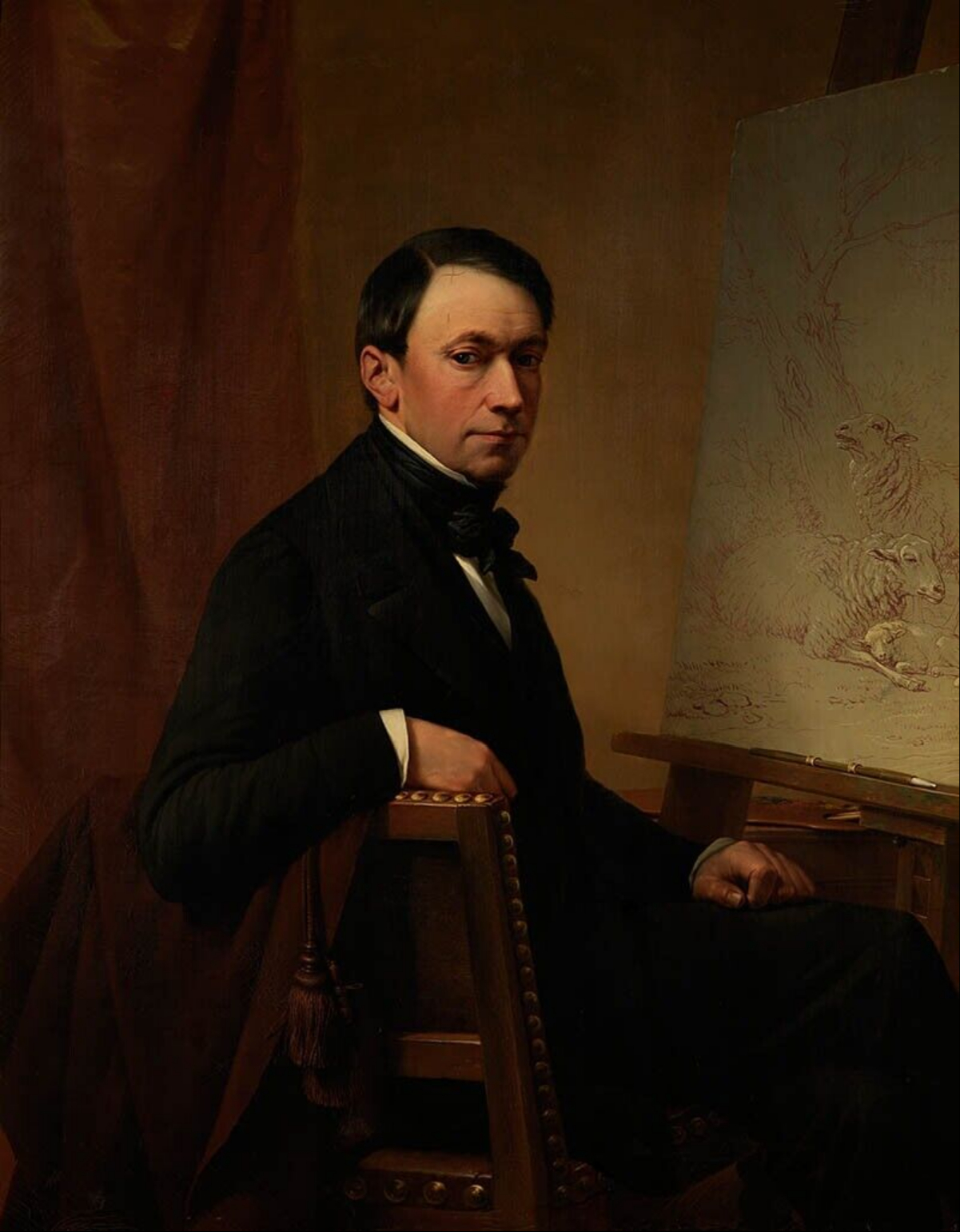
Eugène Joseph Verboeckhoven a Belgian painter, was born at Warneton in West Flanders. He was a painter, a sculptor, an etcher, an engraver, and a lithographer of animals, animated landscapes, and portraits.
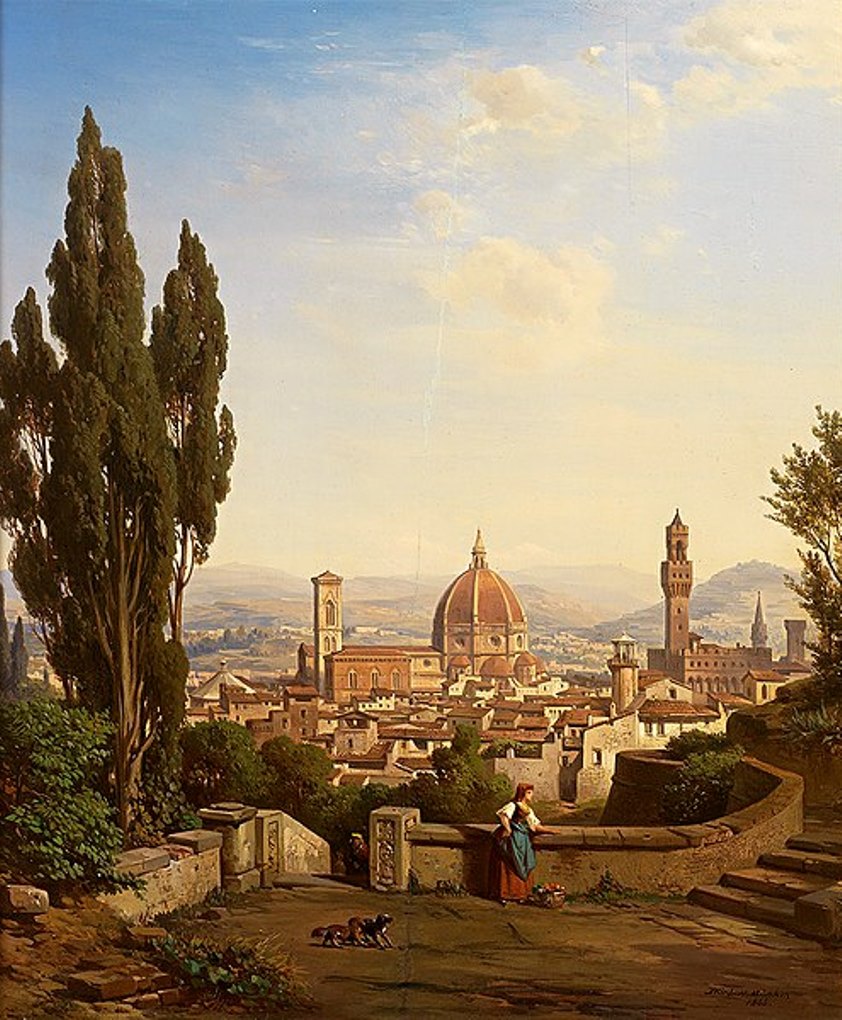
Albert Emil Kirchner was a German painter and draftsman known for his depictions of architectural structures and a member of the Munich Academy of Art.
He made drawings for the collection "Medieval Monuments of Architecture." In the mid-19th century, Kirchner was commissioned by the Bavarian Eastern Railway to produce a series of watercolors of towns along that road. These drawings are still used today as an important source of railroad history.
